Issue #12 - “HOW DO WE KNOW?” Part II
Issue #12, March 2021
TABLE OF CONTENTS
Lise Weil, Kristin Flyntz, Deena Metzger, Andrea Mathieson, Margo Berdeshevsky, Sara Wright,Melissa Kwasny
Editorial Conversation
Deena Metzger
The Imagination is a Real Place: from La Vieja: A Journal of Fire
Margo Berdeshevsky
Half Notes
Sara Wright
Crane Song: Finding my Way Home
Melissa Kwasny
Embodied Knowing: Poetry by Sarah Gridley, Tami Haaland, Lois Red Elk, Adrie Rose, Susan Terrence and D. Walsh Gilbert
Andrea Mathieson
What We Know in Our Bones
Anne Bergeron
After•Word: Jane Caputi’s Call Your Mutha: A Deliberately Dirty-Minded Manifesto for the Earth Mother in the Anthropocene
Lise Weil
After•Word: Tanya Tagaq’s Split Tooth
Melissa Kwasny
EMBODIED KNOWING: POETRY BY SARAH GRIDLEY, TAMI HAALAND, LOIS RED ELK, ADRIE ROSE, SUSAN TERRENCE AND D. WALSH GILBERT
Preface
In the call for submissions to the twelfth issue of Dark Matter it was the phrase “forms of embodied knowing,” a fascinating idea—a knowledge found within our bodies—that made me particularly interested in serving as guest poetry editor. Selecting this small but potent anthology of poems, I have kept an eye out for such embodiments, whether enacted in the form of the poem itself or in the news it contains of alternative practices, deep insights, and perception that does not turn its back on reason, the privileged form of knowing in our times, but, as all good poetry must, opens our eyes to additional, multiple, and perhaps even subtractive ways of understanding the world.
The selection begins with Sarah Gridley’s poem “The Ratios.” In mathematics, a ratio is the quantitative relation between two things. To rationalize is to set one set of ideas or facts against another, to weigh them. Categorizing feelings, memories, or intuitions is not so straightforward. What counts more, the moon falling on lichen or on the draped form of a piano? Which is more beautiful, a color so loud it trumpets or silence in an abandoned room? One might call Gridley’s poems “elliptical” in the sense of an eclipse, the missing part of the sun or moon (or sentence, as in ellipsis) we sense but do not see, something inexpressible set next to the expressed.
In “Having It By Heart,” Gridley describes the effects that reading certain poems have on her. One poem makes “spirits come clean inside the house.” What an enigmatic way to describe a poem’s effect! Did the poem usher in immaculately clean spirits, or did it share all its secrets as in to come clean, or does the line mean it penetrated the house completely? With another poem, she misreads a word, which opens the door to further imaginative connections, like a break in the woods through which we are surprised by the sea.
Set against Gridley’s faith in the word itself as intuitive guide, Tami Haaland’s evocatively titled “Understanding Silence” explores the power of wordlessness. The inability to articulate what we feel can be frustrating, but Haaland presents us with the possibility of a productive silence, a knowledge “welling up” from the inaudible and invisible. The poem reminds us of an even older silence, the silence before language, one that exists in us as newborns and that might have connected us to other animals in pre-history. At the same time, the poem points to the problem of women feigning invisibility or silence to avoid danger or confrontation and the question of who gets to speak.
According to Judeo-Christian scripture, in the beginning was the word, and so out of silence the earth was made. In Dakota tradition, a child first becomes aware that they perceive and responds to this by speaking, an act that “brings life to their being,” Lois Red Elk writes. In “Woableza” and its explanatory preface, “Ableza,” we learn of the Lakota tradition of honoring a child’s first words with a ceremony. Red Elk asks us to imagine the moment of conception as “a spirit leaving the cosmos, the stars, planet bound, to live as a human being. They enter the earth’s atmosphere like a blazing meteorite, like a falling star.” The child’s first words are thus a culmination of that dazzling rush of ancestral and earth knowledge, of music, dance, colors, events, and prayers.
Adrie Rose’s poem “Every witch and mortal knew” addresses women’s knowledge directly, speaking of the practical skills of witchcraft, which included herbal and plant knowledge, midwifery, healing recipes, songs, and spells. And yet the poem begins by situating us right in the catastrophic present: “the unhinging of seasons.” Rose reminds us that everyone except the gods suffers consequences, good and bad, for what they do, and now we are confronted with a “debt we tried not to pay come due.” This spare, finely crafted poem cuts sharp as a knife.
From Revelations to Milton to Auden to Adrienne Rich, poets have addressed the myth of the fallen world we are born into. How to survive it? To reverse course? In Susan Terrence’s “The Fall of All Things,” the first image is dystopian and yet familiar to us from photos of Katrina, the Tōhoku tsunami or any future climactic disaster: roots of trees break into the sky. The world turned upside down. Her poem is an ekphrastic poem, i.e. one inspired by a work of art. In this case, inspiration comes from a painting by the surrealist Salvador Dali. For the surrealists, in dreams, chance, drugs, or even madness, the irrational was pursued not as a replacement of reality or rational thought but as a more complete or super reality, a surreality.
In his 1924 A Surrealist Manifesto, André Breton tells of the writer Saint-Pol-Roux, who posted a sign on his door whenever he slept, stating “The Poet is Working.” We encounter this surrealist working method in D. Walsh Gilbert’s poem “Visits in the Middle of Three Nights.” I admire how the dreamer returns twice to the original dream, retaining the same images but reshuffling them, as if in some progressive and radical revision. There is no dream “interpretation” here though. The mystery is retained. There is, though, a sense that the poet has been given tools to work with.
All together, these poems point to an expanded body of knowledge, something ancient or hidden, something to rediscover, remember, or redefine. My hope is that you, reader, will find much to respond to.
Sarah Gridley
Ratios
At any moment you might
summon the ratios, look inside
divided feelings
wordlessly lapping space.
In shutting windows as it
thunders, at hearing chestnuts
pelt the roof, on finding a flower
drained of color shut in someone
else’s book. Should moonlight
love more a piano draped with a painter’s
cloth, or a headstone hosting dates
with light green, rust, and
trumpet yellow lichen?
All the days of your life
it hasn’t rained
are sentenced with bare
to avid sunshine. Regen.
Rain. Our weathered
fractions are rarely the same.
It’s enough for mirrors to start
refilling—for wind
to move to keep them
restlessly
buried with flowers.
NOTES: this poem began in response to Beethoven’s piano sonata #14, the so called “Moonlight” sonata. I was thinking about moonlight falling on things as distinct from sunlight. I was thinking of the strange interim in To the Lighthouse called “Time Passes”—the draped forms, the wind in the house, forms of preservation and forms of erasure. I was thinking about translation, and the impasse of translation, the way it would feel to go through life experiencing rain as something called by a different name in a different language. I was thinking about the music of Beethoven, the end of his life, what creative energies passed out of the world when he died and what remains of these energies 250 years out from his birthday. The title, “The Ratios” is the title of a new manuscript of poems I’ve been working on. Relation and proportion, analogy and homology are ways of knowing I find very helpfully exercised in Emerson: the world globes itself in a drop of dew.
Having It By Heart
Sunlight got into the hat
you were never finished knitting.
In one poem, spirits came clean
inside the house.
If you misread spurning
for pruning
it was to find something
stranger inside.
One poem remarked, at the edge
of a dogwood petal, the look
of a cigarette burn. Another poem was like
the sun, an indulgent if insistent
companion.
Each poem
was clear
in its counsel.
So we go each day to the stand
of pines to find that self-effacing ghost.
And egress motions
like the sea
with its curious
break in the woods.
NOTES: Fans of Elizabeth Bishop might recognize the dogwood petal she conjures in her poem, “A Cold Spring.” I suppose I am thinking in this poem how poems have become friends to me—deep friends, who walk with me and cross through my thoughts and habits. I was thinking of how, years ago, the poet Robert Pinsky asked a crowd of us to think about why we sometimes say we “have a poem by heart” rather than say we have it memorized. I love to commit poems to memory, to have them “by heart.” I love to be inside of a poem that way, and have it always inside of me, as a new presence in my circulation and outlook. The “we” in this poem is my dog, Freya, poetry, and I. We walk the same circuit every day around a place called Horseshoe Lake. There are many different kinds of trees along this walk, including a stand of white pines, whose needles have always enchanted me.
About the Author
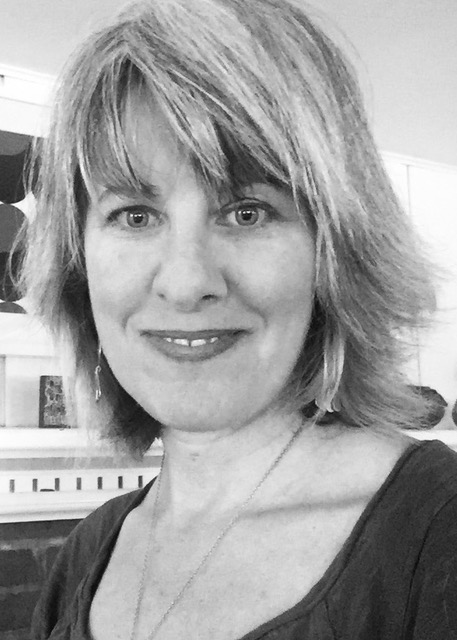 Sarah Gridley is the author of four books of poetry: Weather Eye Open (University of California Press, 2005), Green is the Orator (UCPress, 2010), Loom (Omnidawn Publishing, 2013, awarded the 2011 Open Book Prize by Carl Phillips), and Insofar (New Issues Press, 2020, awarded the 2019 Green Rose Prize by Forrest Gander). Other honors include the 2018 Cecil Hemley Award and the 2019 Writer Magazine/Emily Dickinson Award from the Poetry Society of America. She is in the first year of an MA program in Theological and Religious Studies at John Carroll University.
Sarah Gridley is the author of four books of poetry: Weather Eye Open (University of California Press, 2005), Green is the Orator (UCPress, 2010), Loom (Omnidawn Publishing, 2013, awarded the 2011 Open Book Prize by Carl Phillips), and Insofar (New Issues Press, 2020, awarded the 2019 Green Rose Prize by Forrest Gander). Other honors include the 2018 Cecil Hemley Award and the 2019 Writer Magazine/Emily Dickinson Award from the Poetry Society of America. She is in the first year of an MA program in Theological and Religious Studies at John Carroll University.
Tami Haaland
Understanding Silence
Words didn’t do. She angled one way
and another. Sentences couldn’t
complete. It was awkward, this—
was it a feeling? This inadequate
something, her strength,
invisibility. A friend said maybe
some archetype, some churning
in the gut welling up, something
old. Now and then she had it, a firefly,
a flash, then nothing. It would come
her friend said. It would arrive
without words, silence a part
of the invisible. What if
it was so old it was not yet human,
what if it was old human, inherited
memory. Except for nomadic
tendencies and a host of animals
now extinct on the horizon,
wouldn’t much of it have been
the same? Who was it, in that time?
Who was it who said, now
you must speak?
NOTES:
This poem is about respect for silence and the need to break silence and find one’s voice. To be silent corresponds to being invisible or unknown. Silence may be a precursor and preparation for the voice, but it can also become its own prison.
My connection to the Montana prairie has provided many opportunities to contemplate silence. I love hiking in the river landscape near my original home and contemplating the teepee rings of the Blackfeet people who lived there for generations before my grandparents arrived as homesteaders. I am struck by the silence and isolation of this place, where wind and an occasional bird call might be the only sounds during the day, and coyotes chime in at night. This in contrast to a time when groups of people lived where clusters of lichened rock remain, and bison, grizzly bears, wolves, and other animals would have been present. Thousands of years previously, a variety of now-extinct large mammals existed in these plains. The richer sounds of the imagined past give way to the minimal sounds of the present.
In Silences, Tillie Olsen speaks about natural and unnatural silence for those engaged in creative processes. Natural silence is gestational and serves the work that will eventually emerge. Unnatural silence is imposed from the outside, from society or circumstances. Perhaps we are always navigating between these two, but ultimately there comes a moment of decision when expression will or will not happen.
“Understanding Silence” moves toward the moment of speech and ends with a catalyzing voice, someone who encourages the speaker, who believes the speaker will find her voice.
About the Author
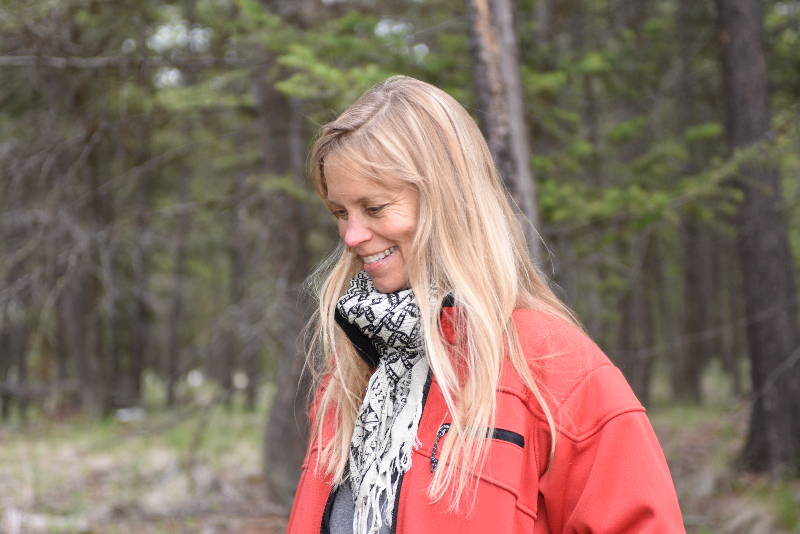 Tami Haaland is the author of three poetry collections, most recently What Does Not Return. Her poems have appeared in The American Journal of Poetry, The Ecopoetry Anthology, and Healing the Divide. Her work has been featured on The Slowdown, The Writer’s Almanac, Verse Daily, and American Life in Poetry.
Tami Haaland is the author of three poetry collections, most recently What Does Not Return. Her poems have appeared in The American Journal of Poetry, The Ecopoetry Anthology, and Healing the Divide. Her work has been featured on The Slowdown, The Writer’s Almanac, Verse Daily, and American Life in Poetry.
Lois Red Elk
Ableza
for the children
I always imagined the moment when my first child would speak their first word,
even before I had a child. This thought came during a quiet time while on my moon.
It was one of the hundreds of curious thoughts I remembered for future times. This
was not made up by me. It is a belief observed by our Lakota culture. The first word
uttered by a Wakanyeja, or a little child, brings life to their being, when they become
perceiving humans, when they can express, in voice, a connection in their minds
between seeing, speaking, hearing, touching and knowing.
Woableza
Imagine a spirit leaving the cosmos, the stars, planet
bound, to live as a human being. They enter the earth’s
atmosphere like a blazing meteorite, like a falling star.
They come in the essence of a spiritual seed, the equation
of sperm and egg full of all the information they will need
to bud, bloom, develop, exist, like a plant, flower, a tree.
Imagine this seed now uses all its instructions to see, hear,
smell, touch, and then to speak. Imagine the voice, vocal
cords vibrating, breath inhaling, then they discover they
can make sounds. Imagine they hear all the songs from
the longhouse, songs of the Sundance, hear the songs of
the Nahuatl sunrise, songs of Aztec ball games. They hear
songs of spirit, family, play and they know all the words,
meanings, know all the pitches and notes. Then imagine
they watch and learn all the ceremonies, dances and rites.
They extend a little hand to the light, softness of clouds.
They feel the air, know its direction. A familiar scent drifts
into the tender taste of plums or an aroma of sage calls their
attention to prayer. They come to this time with love and care.
They listened, observed all those who sang. Imagine they
stop and wonder how they first started to speak, wonder when
they realized they had a voice. What was their first word?
Ceremony marks the time when perceiving comes to babies.
We remember the child’s first word, when they perceive,
that moments have purpose, when life gives them meaning,
when meaning gives them voice.
Lakota language: Ableza – to perceive
Woableza – perceiving
About the Author
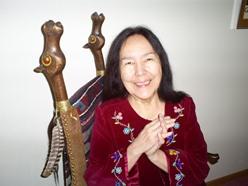 Lois Red Elk is an enrolled member of the Fort Peck Sioux. She is the author of Why I Return to Makoce (Many Voices Press, 2015), Dragonfly Weather (Lost Horse Press, 2013), and Our Blood Remembers (Many Voices Press, 2011), which received the Best Nonfiction Award from the Wordcraft Circle of Native Writers and Storytellers. Red Elk has previously worked as an actor and technical advisor for numerous Hollywood film productions. She teaches cultural courses and traditional language classes at Fort Peck Community College in Montana.
Lois Red Elk is an enrolled member of the Fort Peck Sioux. She is the author of Why I Return to Makoce (Many Voices Press, 2015), Dragonfly Weather (Lost Horse Press, 2013), and Our Blood Remembers (Many Voices Press, 2011), which received the Best Nonfiction Award from the Wordcraft Circle of Native Writers and Storytellers. Red Elk has previously worked as an actor and technical advisor for numerous Hollywood film productions. She teaches cultural courses and traditional language classes at Fort Peck Community College in Montana.
Adrie Rose
Every Witch and Mortal Knew
The unhinging of seasons
meant a deal struck with the gods
and broken, a trick
punished, a debt we tried not
to pay, come due. We
feared the deep well of winter turned
bottomless, how many children
or changelings sent
into the dark, knowing
by the old laws
it will have to be burning
for our burning, and songs
the only tools left to us,
which is not to say we are left with nothing.
NOTES:
As a woman and a parent living in the anthropocene, questions about what we know, how we know it , and how to integrate that knowledge are central to my living and my writing. These poems ask how we are subtly taught to participate in racism and other oppressive systems creating the climate emergency, how we can begin to ask questions, what is known by the more-than-human sentient beings around us, and how to be in conversation with them. Ultimately, these poems ask how we continue to love the earth and each other, in the face of ongoing loss and devastation.
About the Author
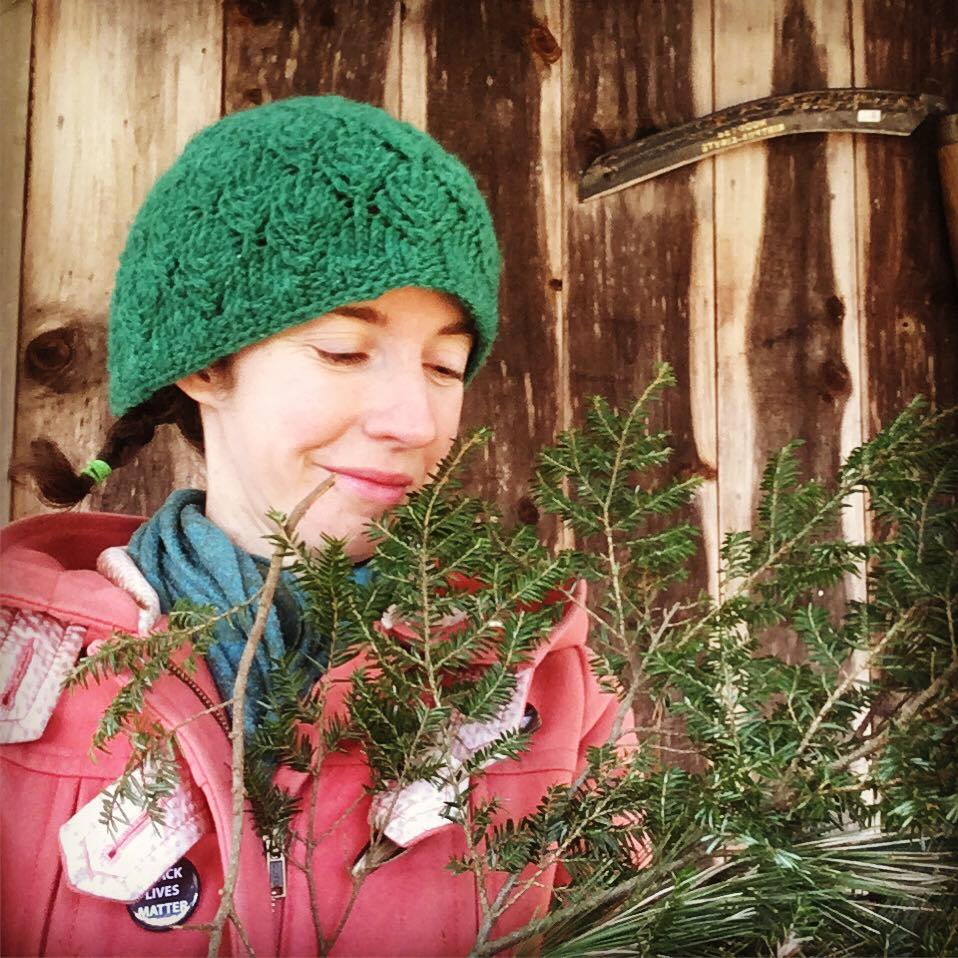 Adrie Rose writes, works with herbs, and organizes for climate justice in occupied Nonotuc and Pocumtuc territory. Her work has previously appeared in Witness, Rise Up Review, Rebelle Society, Plum, Peregrine, Albatross, The Essential Herbal, Poetry Breakfast, bitches be witches, and Ibbetson Street Review. Her poem “In the Liminal” was awarded second place in the Robert P. Colleen Poetry Competition.
Adrie Rose writes, works with herbs, and organizes for climate justice in occupied Nonotuc and Pocumtuc territory. Her work has previously appeared in Witness, Rise Up Review, Rebelle Society, Plum, Peregrine, Albatross, The Essential Herbal, Poetry Breakfast, bitches be witches, and Ibbetson Street Review. Her poem “In the Liminal” was awarded second place in the Robert P. Colleen Poetry Competition.
Susan Terrence
The Fall of All Things
inspired by Salvador Dali’s “Swans Reflecting Elephants”
Sky pierced by
roots of trees
Branches dive
in the water
Neither cold
nor hot
Earth has died
during this dance
or is dying &
we cannot save
it b/c we too
are gone
It is the memory
we know
from all dreams
that have left us.
The grasses & hills
are yellow not
from a reflection
of the sky, but
a recollection of it
How do we
(who left it behind)
know
It is written
in sand
in the veins
of the earth
Look harder
Remember more
Dig for our stories
Who are we
talking to?
Who can
still listen?
Who is not
numb from
the fall of
all things?
NOTES:
“The Fall From All Things” is an ekphrastic poem inspired by Salvador Dali’s “Swans Reflecting Elephants.” In it, gnarled roots or bare tree branches appear to reach into the sky and a reflective pool, and surrounding cliffs are devoid of flourishing life. Our current disassociation from each other and our natural surroundings stems not only from the pandemic, but also from the edicts of a merciless and tyrannical administration for four years. There is the recognition that our personal and ancestral stories and the stories and voices of the plants, the animals, the water and the sky are still there, but that they have been temporarily buried. The brutal assaults on our lives and sensibilities have rendered any survivors numb. Perhaps becoming numb in this type of assault is a means of survival? So that is why there is the ambiguity—is the earth dying or has it died? How do we know if we are near death if we can no longer speak or see or hear? Or are too horrified to utter another word to even ask for help? Is our functioning culture and the world society seared beyond repair?
About the Author
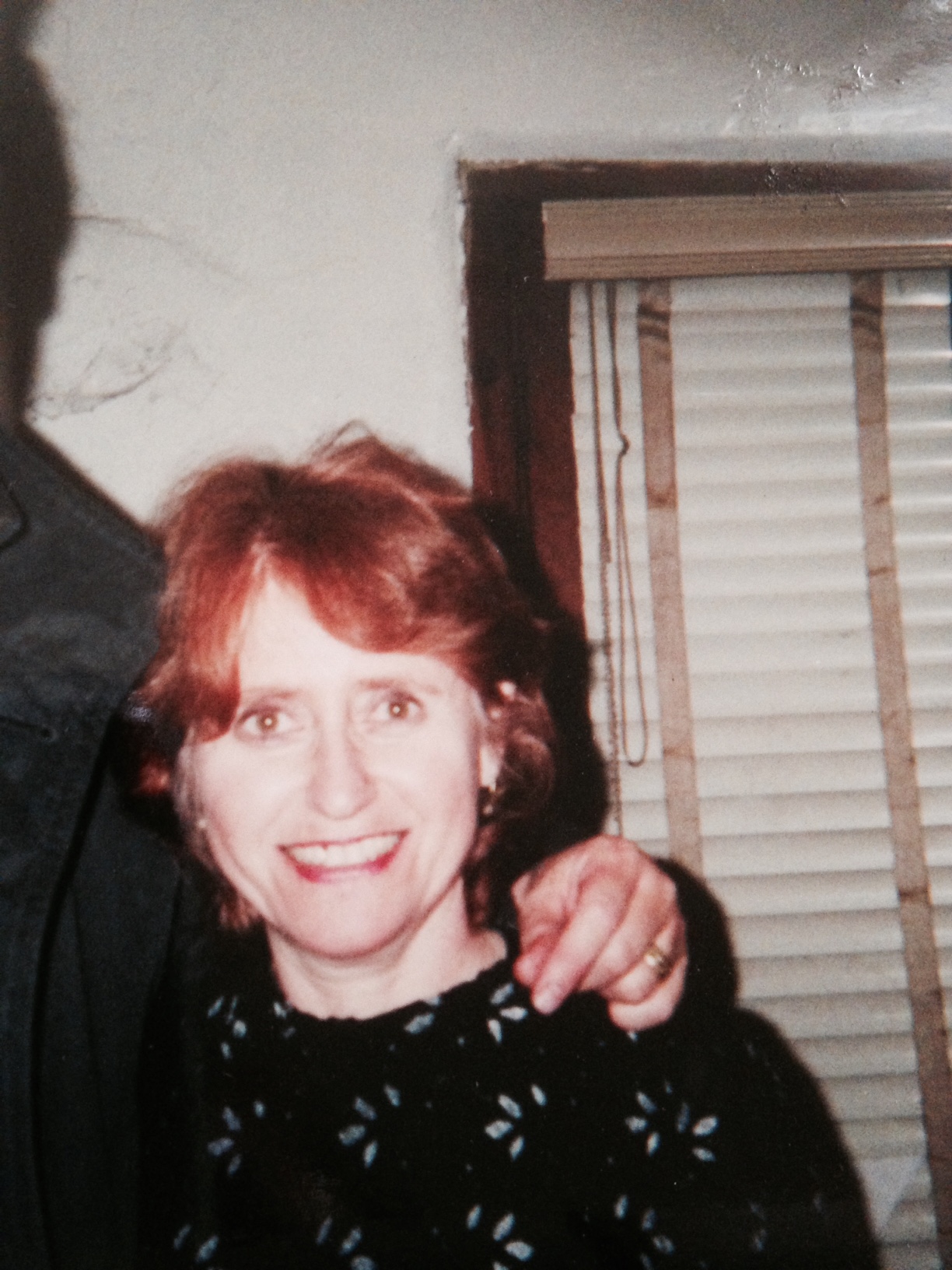 Susan Terence has won several awards for her writing, including a DeWar’s Young Writer’s Recognition Award for the State of California. Her poetry has been published in Southern Poetry Review, Americas Review, San Francisco Bay Guardian, San Francisco Chronicle, St. Petersburg Review, Nebraska Review, Negative Capability, and several other magazines and anthologies. She received her B.A. in English Education with additional studies in Spanish, and her M.A. in Inter-Disciplinary Arts and M.F.A. in Creative Writing from San Francisco State University. She has served as a writer and performing artist in residence through the Montana, North Carolina, and Fulton County (Atlanta) Georgia Arts Councils; through Arts in Arizona Towns; performed and led workshops on the Tohono O'Odham Reservation; and throughout Northern California via California Poets in the Schools. She’s been named Creative Writing Teacher of the year by the San Francisco Unified School District. She has also been a Poet in Residence at the De Young and Legion of Honor Museums in San Francisco. She has completed a novel set in a southwestern barrio that deals with gentrification, deportation, and homophobia.
Susan Terence has won several awards for her writing, including a DeWar’s Young Writer’s Recognition Award for the State of California. Her poetry has been published in Southern Poetry Review, Americas Review, San Francisco Bay Guardian, San Francisco Chronicle, St. Petersburg Review, Nebraska Review, Negative Capability, and several other magazines and anthologies. She received her B.A. in English Education with additional studies in Spanish, and her M.A. in Inter-Disciplinary Arts and M.F.A. in Creative Writing from San Francisco State University. She has served as a writer and performing artist in residence through the Montana, North Carolina, and Fulton County (Atlanta) Georgia Arts Councils; through Arts in Arizona Towns; performed and led workshops on the Tohono O'Odham Reservation; and throughout Northern California via California Poets in the Schools. She’s been named Creative Writing Teacher of the year by the San Francisco Unified School District. She has also been a Poet in Residence at the De Young and Legion of Honor Museums in San Francisco. She has completed a novel set in a southwestern barrio that deals with gentrification, deportation, and homophobia.
D. Walsh Gilbert
Visits in the Middle of Three Nights
1.
She’d woven fabric for the doll’s face from dark human hair.
Drawn stars on its face for eyes.
And I drew back when she held it out to me.
I drew back three steps.
She held it out to me and shook it. See?
But, I had come looking only for directions.
Lost in what looked like a ghost town. A railroad. Sagebrush.
But, I wasn’t sure of much, especially this doll.
I was sure it was better stitched without human hair.
But there it was. Dancing. Legless.
No legs. Star eyes and a long burlap skirt over a dancing body.
I asked her to weave me a long burlap skirt.
2.
The chickens, she said, were dying.
There wasn’t a coop; there was only a field.
An open field filled with dusty pits.
But it wasn’t pitted; it was safe.
It was safe in the dust.
And hens wandered through the open field.
And there was stumbling, but there was dance.
3.
She stripped willow switches, long and thin, and braided them like hair.
There was dark. There was solitude.
There was the dark silence that she craved.
But, I saw her dance.
I saw her dance silently with switch and doll and hen and burlap skirt.
I saw her dance with music playing only in her head.
A silent dance that kicked up dust.
A dance meant just for me.
And so, I danced with her in silent darkness through an open field.
But dusty fields are lit by starry eyes in dreams.
And dream-swept, she led me past the sagebrush and the ghosts.
To sit beneath a willow tree.
NOTES:
This poem summarizes my dreams over three consecutive nights during the pandemic when uncertain times instilled in me a fear of human extinction. Like many, my dreams became dark and surreal. When putting pen to paper, end-stopped lines seemed to capture a kind of finalization, and then, a starting over—another chance to continue the story. Line after line moved forward. There was hope in beginning each new line. There was an “again”. Following those three nights, I understood we humankind would continue to dance together if we stayed together. Not every step would make sense, and it would be scary, but we would finally arrive at the sacred willow.
About the Author
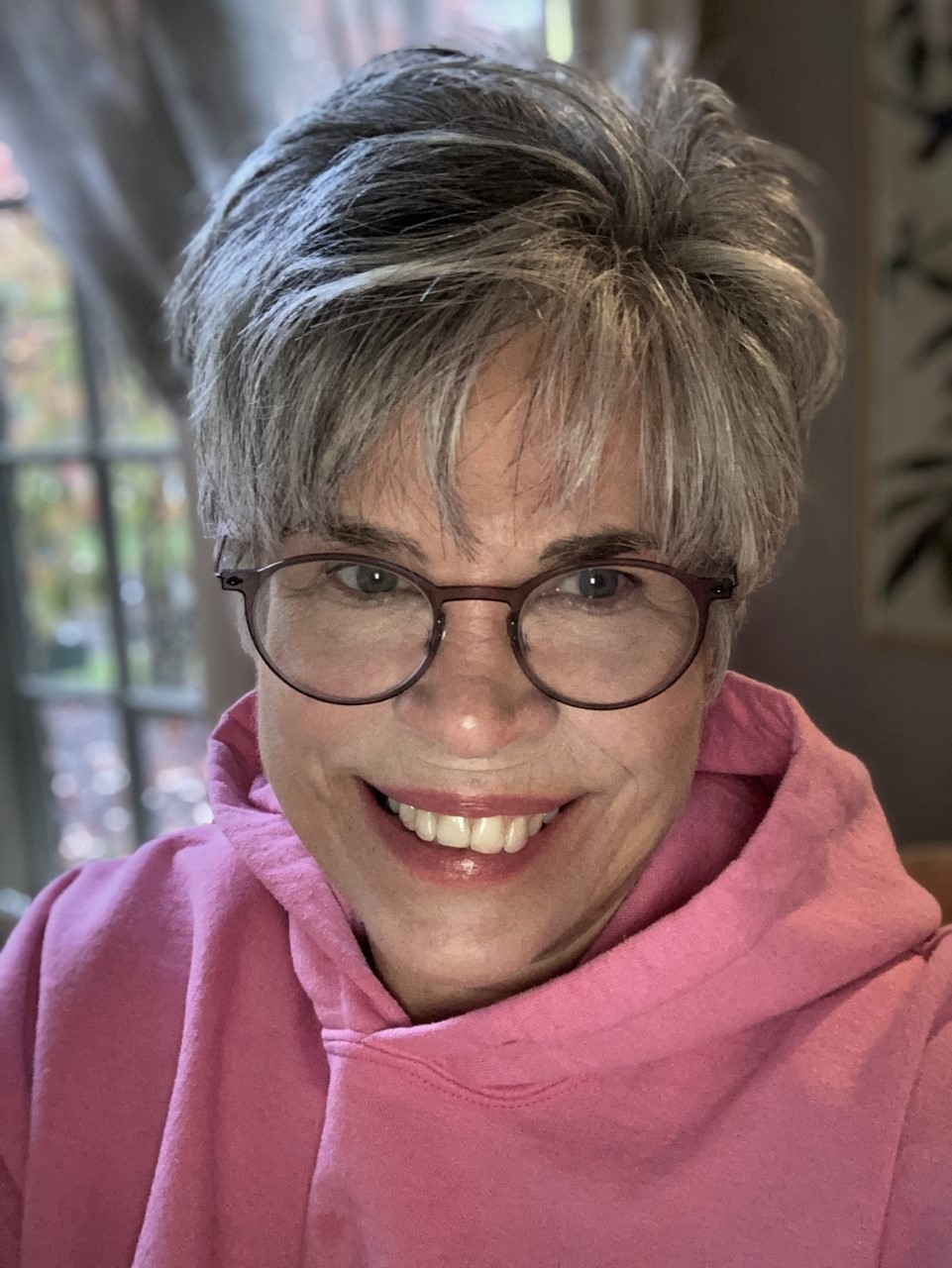 D. Walsh Gilbert is the author of Ransom (Grayson Books, 2017). A Pushcart nominee, her work has appeared in The Café Review, Montana Mouthful, and The Ekphrastic Review, among others, and is forthcoming inthe anthology, Waking Up to the Earth: Connecticut Poets in a Time of Global Climate Crisis. She serves on the board of the non-profit, Riverwood Poetry Series, and as co-editor of the Connecticut River Review published by the Connecticut Poetry Society. She lives in a rural setting in Connecticut with her husband and two old dogs.
D. Walsh Gilbert is the author of Ransom (Grayson Books, 2017). A Pushcart nominee, her work has appeared in The Café Review, Montana Mouthful, and The Ekphrastic Review, among others, and is forthcoming inthe anthology, Waking Up to the Earth: Connecticut Poets in a Time of Global Climate Crisis. She serves on the board of the non-profit, Riverwood Poetry Series, and as co-editor of the Connecticut River Review published by the Connecticut Poetry Society. She lives in a rural setting in Connecticut with her husband and two old dogs.
About the Poetry Editor
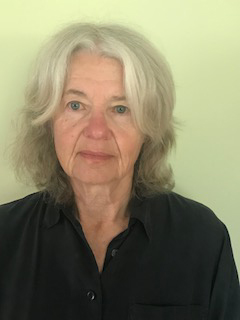
Melissa Kwasny is the author of six books of poetry, most recently Where Outside the Body is the Soul Today (University of Washington Press Pacific Northwest Poetry Series) and Pictograph (Milkweed Editions), as well as a prose collection, Earth Recitals: Essays on Image and Vision (Lynx House Press). She is the editor of Toward the Open Field: Poets on the Art of Poetry 1800–1950 (Wesleyan University Press) and co-editor, with M.L. Smoker, of the anthology I Go to the Ruined Place: Contemporary Poets in Defense of Global Human Rights (Lost Horse Press). Recently published by Trinity University Press, Putting on the Dog: The Animal Origins of What We Wear is her first book of nonfiction. She is currently serving as Montana Poet Laureate, a position she is sharing with M.L. Smoker.
To comment on this article, please click here.
Copyright © 2014-2021 Dark Matter: Women Witnessing - All rights reserved to individual authors and artists.
Email: Editor@DarkMatterWomenWitnessing.com
Please report any problems with this site to webmaven@DarkMatterWomenWitnessing.com
